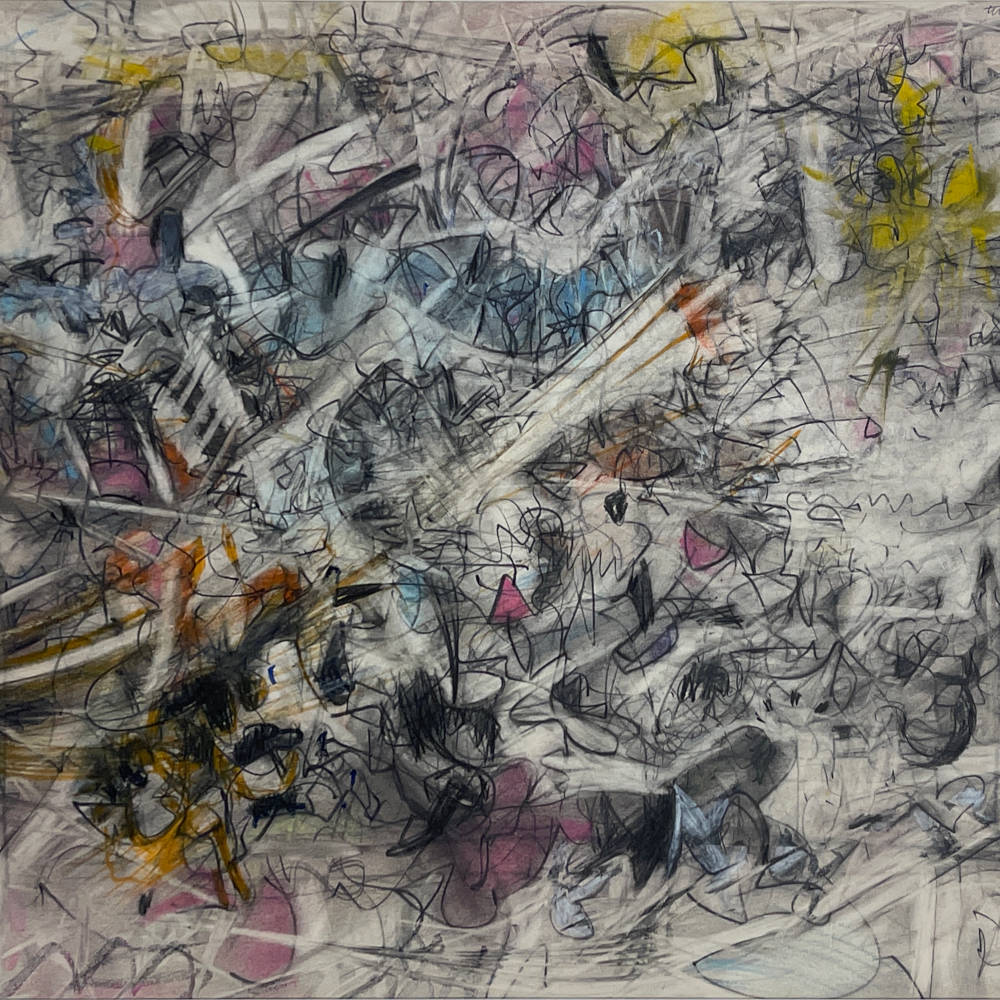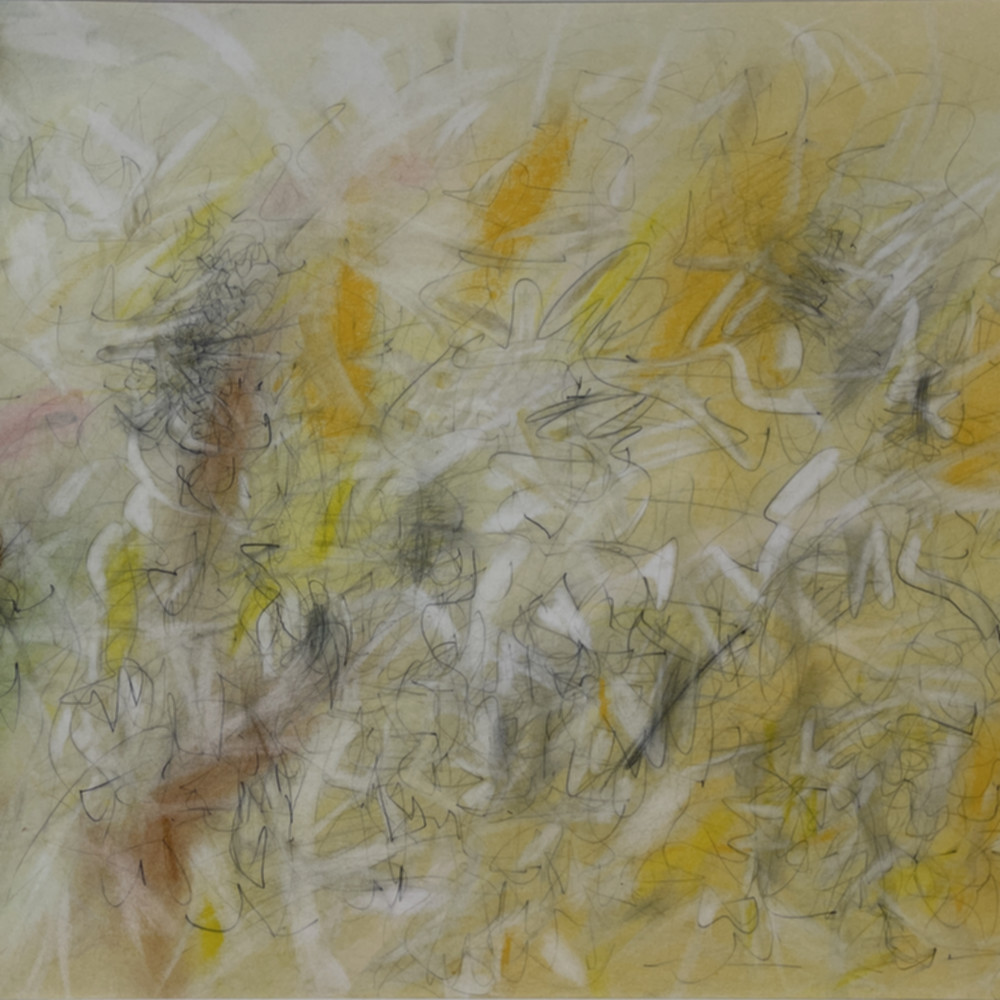Domenick Turturro is known for his all-over gestural paintings, similar to the style of artists like Mark Tobey and Jackson Pollock, in which the artist uses a varied color palette to experiment with the figure and ground, creating fields of wild arrangements. But Turturro avoids the difficulties of his style admirably by guiding his hand by a notion of shape particular to each work. Sometimes this shape is island-like and orange, floating in profusion against a dark background. Sometimes the shapes are fan- or flower-like, scraped onto the surface in arcs to achieve an effect of bright translucency. Occasionally, a very subtle reference to printed fabrics is made.
The boundary between foreground and background is often blurred due to his signature combination of application and erasure in a balanced treatment of negative and positive forms, creating a push-pull effect that gives the work overall dynamic movement. And while the application is gestural, there is often a shape or form particular to each work. Sometimes the shapes are fan or flower-like, and may even reference printed patterns. Adding to the interest, Turturro’s range of color is extraordinary, from keyed-up, “artificial” aquas and magentas to maroons and ochres which seem almost to have acquired a patina of use.
Legendary gallery owner Allan Stone maintained a longtime association as patron and friend to Turturro, and exhibited the artist numerous times at his eponymous gallery from the the late 1960s to mid-1980s.
Turturro studied at Cooper Union and the Pratt Institute as well as the New School from Social Research. He showed at numerous prestigious galleries, including Aspects Gallery, A.M. Sachs Gallery, and the Albright Knox. His work is in many important collections, including the Rockefeller Collection at Chase Manhattan Bank, ABC, Union Carbide Corporation, the Hirshhorn Museum, and the Boston Museum of Fine Arts.


